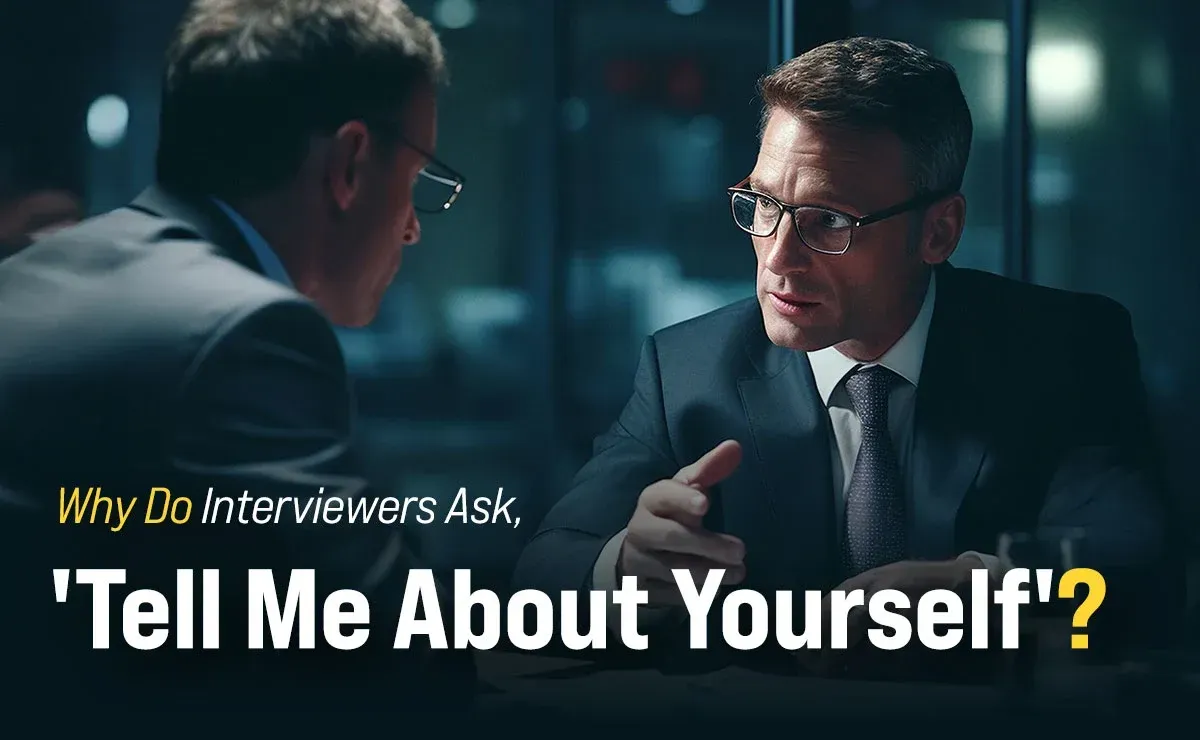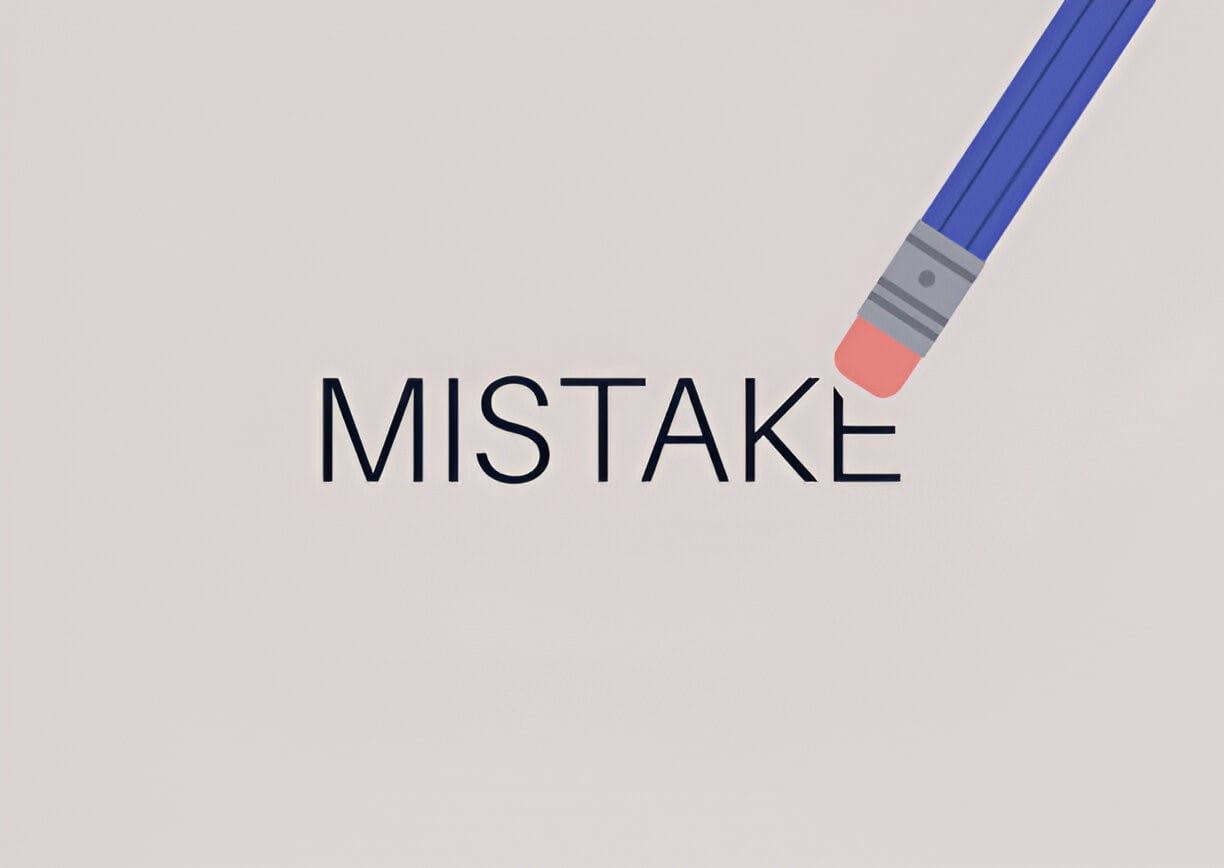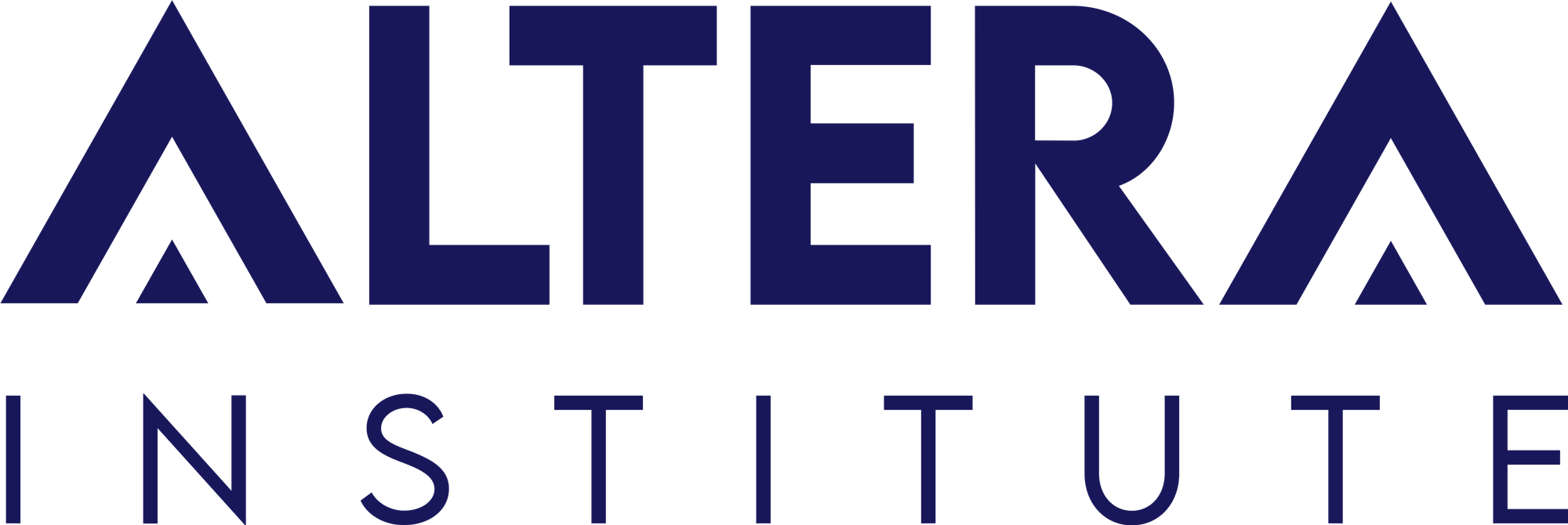How to Introduce Yourself in an Interview as a Student?

Interviews are an important milestone for students, as they are the first step toward professional or higher education opportunities. It could be an interview at the university, an internship, your first job — whatever the reason you must meet someone, learning how to self-introduce is a master skill that prepares you for a successful conversation.
This guide will provide you with actionable insights on how to introduce yourself in an interview as a college student seeking a job or pursuing higher academic pursuits, while leaving a lasting impression.
Introducing yourself confidently sets the tone for any interview. At Altera Institute, students learn to present their skills and experiences effectively while receiving hands-on guidance that enhances placement-readiness. See how our programs prepare you for interviews and career success.
Why Do Interviewers Ask, 'Tell Me About Yourself'?
In the “Tell me about yourself” question, an interviewer evaluates not only your qualifications but also your personality, enthusiasm, and potential.
Key Objectives of an Interviewer
- Assess your communication skills and confidence.
- Understand your academic and extracurricular achievements.
- Test your alignment with the role, program, or institution.
- Evaluate how well you can think quickly and respond sincerely.

Hence, use this question to showcase your unique perspective and how it ties to your academic and career goals.
Understanding the Interview Context
Before crafting a student’s self-introduction for an interview, it’s essential to understand the interview's purpose. Whether it’s for college admissions, an internship, or a job, different scenarios require different approaches. However, the fundamental goal remains the same: to present yourself as a promising candidate who aligns with the institution's or organization's values.
Understanding the interview context also means being aware of the format. Each situation necessitates a unique strategy, whether it is a one-on-one interview, a group meeting, or a panel meeting. By preparing these subtleties, you can approach the interview with confidence and adapt your introduction effortlessly.
Imagine that you are gearing up for a job interview. With that in mind, let's explore how you can craft an introduction that is engaging and memorable for the interviewer.

How To Answer The 'Tell Me About Yourself' Question in a Job Interview
An introduction to yourself during a job interview should be a 30-second elevator pitch, which is to the point and effective. It must highlight who you are, your accomplishments, and why you would be a perfect fit for the job. To create a powerful introduction, pay attention to the following important elements:
Start with Your Name and Current Status:
Begin by stating your name and your current academic or professional status. If you’re a student, mention your field of study, the institution you are attending, and your year or level of study. This serves as the groundwork for your introduction.
Example: “My name is Rahul Verma, and I am currently in the final year of pursuing a bachelor’s degree in business administration at ABC University.”
Chronologically Outline Your Background
Follow a logical sequence by providing a brief overview of your background. You can include:
- Where did you grow up?
- Your academic experience to date that demonstrates any accomplishments.
Example: "I was brought up in Mumbai, and I had an appreciation of marketing and business strategy early on in my life, and this is what made me choose my degree. I was also the leader of the organizing committee of the annual business conclave of my university, where more than 350 participants were involved in 20 plus colleges, and sponsorship of 60,000 was achieved."
Highlight Key Skills and Strengths
Recruiters value candidates who can demonstrate qualities such as teamwork, reliability, and consistent performance. Select 2–3 qualities that define you and support them with relevant experiences, such as internships, leadership roles, or projects.
Example: “I had an experience as an intern in a digital marketing agency when I worked on the conceptualization and design of social media campaigns on 5+ major clients, where the average customer engagement increased by 20 percent. The experience enhanced my leadership and project management skills and allowed me to learn that you should remain calm in such situations and know how to manage different teams.”
Showcase the Scale of Your Work
Adding measurable achievements lends credibility and makes your contributions more impactful.
Here, the examples you present— such as a 20% growth in customer interactions, serving 5 or more major customers, or a 60k sponsorship opportunity —will matter, as they will demonstrate the quality of your work and job, and make you appear more relatable to the interviewer.
Add a Personal Touch
Add a hobby, interest, or passion that showcases your personality and helps you form a bond with the interviewer.
Example: " I am passionate about hiking and have explored trekking trails across six states in India."
End with Your Career Aspirations
End your introduction with a statement of your excitement about the opportunity and how it aligns with your career objectives.
Example: "I am thrilled about this experience because I am eager to introduce my background and expertise in strategy, communication, and collaboration to work in a dynamic and innovative company.
Tips for Delivering Your Introduction Effectively

- Be Concise: Aim to keep your introduction under one minute. Only the most significant information should be put into the limelight.
- Sound Natural: Use a natural voice, so it doesn't sound robotic.
- Practice: Rehearse by standing in front of a mirror or recording yourself to pinpoint areas for improvement and enhance your delivery.
- Maintain Positive Body Language: Keep a soft smile, sit upright, and maintain eye contact to exude confidence.
- Make Your Interviewer Interested: Use your introduction to pique the interviewer's interest, or prompt them to ask about your experiences or achievements.
By focusing on these key components and delivery tips, you can create an introduction that leaves a strong and lasting impression, setting the stage for a successful interview.
Preparing for a job interview differs significantly from preparing for a college interview, which is why understanding the interview context is crucial. Therefore, we will examine the preparation for your college interview introduction.
How To Answer The 'Tell Me About Yourself' Question in a College Interview?
The correct balance in self-introduction during a university interview should be a combination of professional and personal, in which you outline to the interviewer both your qualifications and the personalities you possess that you can bring to the table. The following is the way to start an interview as a student:
Start with an Informal Introduction
When learning how to introduce yourself in a college interview, know that a polite greeting and a brief introduction to who you are always work best. State your name, current academic standing, and some details about your background.
Example: “My name is Sarah Malik, and I am a high school graduate living in Jaipur and about to join a business administration degree course.”
Highlight Your Family and Upbringing
Give a snippet of your background, although do not make it too long. This makes your introduction more human and helps the interviewer relate to what you are saying.
Example: “I was brought up in a joint family in which education was given the first priority. My parents are also entrepreneurs, and that is what has contributed to my passion for business development and strategy, which has made me what I am today.”
Talk about Your Academic Experience.
Talk about your academic path, focusing on subjects or experiences that sparked your interest in the field you're applying for. Share any relevant courses, projects, or achievements.
Example: "During high school, I developed a deep interest in economics and particularly in business studies. I also led a group project in my final dissertation, where we developed a hypothetical business plan for a sustainable packaging startup, earning full marks for our innovative approach."
Emphasize Quantifiable Achievements
Emphasize achievements that reflect your dedication and capabilities. Use metrics or tangible results to give credibility to your achievements.
Example: “I am also the vice-president of the commerce club of my school and assisted in organizing an interschool business case study competition where more than 200 students participated, representing 15 schools. This experience helped me understand how to manage resources, effectively communicate, and resolve conflicts, all of which made me even more passionate about business.”
Share Unique Personal Information
Include either hobbies, interests, or extracurricular activities that can be used to demonstrate your personality and make you stand out.
Example: "Outside of academics, I am passionate about photography and storytelling.”
Connect Your Journey to the Opportunity
Why is the program or institution important to you, and how is it relevant to your objectives? Prove that you have done your due diligence on the opportunity and show your true enthusiasm for the same.
Example: "XYZ College is one of the best colleges in India, where I can earn a degree in business administration, which makes this opportunity even greater for me. I believe that this program will equip me with the knowledge, skills, and practical learning activities that will propel me towards my career in the most appropriate direction.”
Tips for Delivering Your Introduction Effectively
- Make Your Response Personal: Customize your answer to align with the college's values, mission, and the program you are applying to.
- Be Clear: Structure your answer to the interview question coherently to keep the interviewer interested.
- Be Authentic: Speak honestly about what you want. It is better not to be too dramatic, but the reality is always more impressive.
Common Mistakes to Avoid

Along with a powerful introduction, it is equally important to avoid common mistakes in your introduction during a college or job interview. The following are some of the pitfalls that students frequently fall into and how to avoid them:
- Overloading the Interviewer with Information: Providing an overly detailed account of your life, packed with too many achievements or unrelated details in your introduction, can make your interviewer less interested. The point is to let the interviewer ask a question regarding any of your relevant experiences in detail.
- Sounding Robotic or Rehearsed: Memorizing your introduction word-for-word can make you come across as unnatural or overly rehearsed. Hence, do practice your introduction to get comfortable, but focus on delivering it conversationally.
- Neglecting Body Language: Poor posture, lack of eye contact, or nervous fidgeting can undermine the impression you’re trying to create. Adopt an upright posture, maintain steady eye contact, and use intentional gestures. A warm smile and a confident handshake can set a positive tone.
- Lacking the Element of Why You Are Here: It is possible that, without relating your experiences and goals to the opportunity offered to you, the overall impact of the interview may be reduced. And this is why you should conclude your introduction by giving a little explanation as to why you are interested in this position or program and what you expect to accomplish.
By avoiding these common mistakes, you can deliver a polished and impactful introduction that sets the stage for a successful interview.
Sample Self-Introduction Scripts
For a Technical Role:
Example: "Good morning, I’m Rahul Mehta, currently in my final year of pursuing a bachelor's degree in computer science from IIT Delhi. Growing up in Pune, I was always fascinated by technology, which led me to explore coding and problem-solving from an early age. During my undergrad, I interned at Infosys, where I developed a scalable backend system that reduced processing time by 25% for client applications.
Additionally, I have been the team leader (five-member team) in a college hackathon, during which we created an AI-based chatbot, which won the 'Best Innovation' category. My solid background in algorithms and my desire to solve real-world problems make me seek jobs where I can innovate and create effective solutions. Beyond academics, however, I am an enthusiastic chess player, and I love playing it because it helps me improve my strategic thinking.”
For a Creative Role:
Example: "Hello, my name is Priya Sharma, and I am a final year student undertaking a bachelor's degree course in media and communication at Christ University, Bangalore. I have always been good at telling stories, and this is what prompted me to pursue an internship at Ogilvy, where I brainstormed and created social media campaigns on three big brands, and the response rate went up by 30%.”
“Being the editor of a cyber magazine published at my university, I had to lead a team of 10 writers to publish interesting stories, and the result was a doubled readership within a year. My creative advantage, along with my understanding of how the audience behaves, allows me to create something that will resonate. During my free time, I also practice photography and have already displayed my work in two art exhibitions in the town.”
For a Management Trainee Role:
Example: "Good afternoon, I’m Ankit Verma, a final-year bachelor's in business administration student at Delhi University. My interest in leadership and strategy grew during my internship at Deloitte, where I analyzed client data and identified process inefficiencies, resulting in a 15% cost reduction for the project.”
“Being the president of my college business club, I arranged an intercollegiate case competition where more than 500 students participated in the competition, and the sponsorship obtained was worth [?]1 lakh. These experiences have sharpened my analytical and organizational skills, and I am eager to apply them as a dynamic management trainee. Out of school, I also practice long-distance running, which has enabled me to learn discipline and focus.”
These outlines are also role-specific and mention pertinent skills, experience, and personal qualities. Make them conversational and flexible with the interview flow.
FAQs:
Q1. How long should my self-introduction be in an interview?
Ans: The time of self-introduction should be around 50-60 seconds. This time will enable you to briefly highlight your background, achievements, and major strengths, while also maintaining the interviewer's interest without providing elaborate details.
Q2. How can I make my self-introduction stand out in a group?
Ans: To make your introduction memorable:
- Start with a strong opening statement that reveals a unique fact about yourself.
- Highlight your unique value and back your claims with specific examples.
- Be authentic about yourself without exaggerating.
- Engage with the interviewers in a conversational manner.
- Add a personal touch through hobbies and interests that reflect your personality.
Q3. How can I practice my self-introduction to ensure a smooth delivery?
Ans: To practice your introduction, rehearsal before a mirror is fine, or, even better, you can record yourself and view the film afterwards to critique and improve the weaknesses. You may also practice with your friends, family, or mentors in order to receive constructive criticism.
Summing Up:
Knowing how to present yourself during an interview as a fresher or student is an important skill. As you apply for a job, a postgraduate college, or an internship, what you say at the beginning of the application creates the message and establishes your rapport with an interviewer.
By well-organizing your response and focusing on the relevant experiences or presentation improvements, you will be able to demonstrate yourself as a confident and sincere candidate.
A compelling introduction not only shows your qualifications but also conveys your enthusiasm and potential, creating a positive foundation for the interview.





